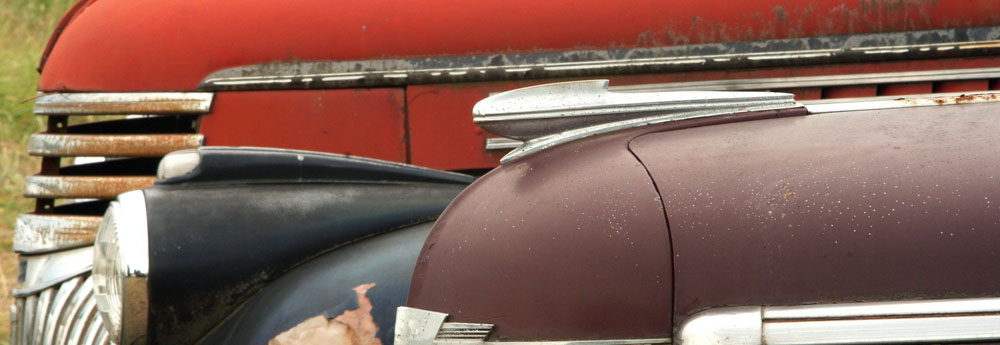The swimming hole is gone, but the watering hole thrives.
Before the Olympic sized swimming pool opened at Titlow beach, in 1955, there was a swimming lagoon. In a previous post I noted that in the 1920’s it was pristine. According to the 9/2/31 issue of the Tacoma Ledger, the plan was to make the place, “the most popular swimming resort of Tacoma.” Bessie Ewing and Irene Tollefson stood beside the control pipe that the Northern Pacific Railway installed to control the tidal flow in and out of the lagoon.
As I noted in a previous post, by 1938 it was not so pristine. and in July of 1949 Mrs. E. S. Wright wrote a letter to the Tacoma News Tribune in which she commented on the, “disgraceful condition of Titlow Beach,” noting that, “just outside the lagoon a foul sewer, complete with seagulls, empties out and washes in every time they open the gates. Fine thing for a beautiful, modern, city like ours to have especially with polio getting prevalent.” By 1958 the historic, but now deteriorated, Titlow swimming lagoon had become a salmon farm. How long that lasted I have been unable to determine.
Enter the pool. In 1955 the Titlow Beach pool was opened; the first of its kind in the Tacoma area and state-of-the-art. The 165 x 75 foot pool began as a salt water pool but in 1956 it was decided to try filling it with fresh water. A public vote later that year favored fresh water nearly three to one, so fresh water it remained.

Photo courtesy of Sharon Styer. Visit her Flickr photostream and website.
It was opened to great fanfare. Dick Hannula was the director of the new pool and Ray Daughters and Clay Huntington were masters of ceremonies.
Dick Hannula and Ray Daughters were two of the biggest names in competitive swimming. Mr. Hannula trained potential Olympic athletes, founded the Tacoma Swim club and was inducted into the swimming hall of fame in 1987.
David Eskenazi and Steve Rudman, noted that Ray Daughters, “Friends used to insist that, while swimming existed long before Ray Daughters came along, he was the one who perfected it.” His career spanned the years 1916-1964. “Daughters coached his swimmers to 301 American records and eight Olympic medals, including four gold.” He also became a member of the swimming hall of fame.
Entertainment was provided by the Lincoln Aqua Maids ballet team, featuring: Mrs. Vivian Sterline, advisor; Phyliss Chapin, Pat Lautenmilch, Deanna Tullis, Nancy Bashey, Jerry Lee Irwin, Eileen Fallon, Joann Irwin, Mary Welsh, Christine Hager, Linda Myhre, Carolyn Bartell, Verna Munro, Kay Manful, Debie Dean, Coleen Bates, Marjorie McCaskie.
They were accompanied by the Stadium, (High School?), ballet swim team with Hazel Minton and Helen Simmons as advisers and Maureen McGowan, Janet Broussard, Janet Elrond, Sally Arthur, Jo Marie Fleming, Arrol Dammeier, Kay Blankenship, Sharon Viafore, Margie Moni, Consi Evans, Marian Williams, Geraldine Van Eechout, Eloise Engerbretson, Carol Berry, Janet Leonard, Ruth White, Joan Weller, Sharie Holmes, Fran Williams, Sally Gord doing the swimming.
And finally, the YWCA Ballet troupe, advised by Miss Revajlan Porter, featuring Susan Badbaw, Carmen Carmichael, Janet Devish, Wyn Gourley, Karen Ronstadm, Kay Turner, Mary Welsh, Joyce Barden, Charlene Marshall, Pat Frayne, Judy Erdahl, Ann Causato, Adele Ulvan, Darlene Simmons, Carol Benham.
June 1-5 part of the celebration included a “Griddle-Go-Round,” predicted to be, “the largest pancake feed show in Pacific Coast History.” Featured was Aunt Jemima as performed by actress, dancer and singer, Palmere Jackson.
I looked for additional information about Ms. Jackson, who vowed, in the California Eagle, 9/23/1954. that, The”‘Aunt Jemima’ role for Pillsbury Flour is way far off from the ‘handkerchief head’ sort of thing that lots of folks suspected it would be.”
I found a piece in the Baltimore, Afro-American, 12/27/1930, which said, “Palmere Jackson whose pretty face is seen in the fast dancing chorus of the Apex nightly, is the daughter of the Rev. C. H. Anderson, now deceased, who founded New Hope Baptist Church years ago. ‘Pal has great ambitious [sic] in the poetic field.’ She was schooled at Prescott, Arizona, High School.” I also learned that she performed with the Sunkist Maids in a 7/13/29 article from the same publication which noted, “A chance to sail the seven seas came to a group of Sunkist maids when they sailed Tuesday for Australia to play a long engagement, with a company from the States. Those billed to go were: Flora Washington, Dorothy Johnson, Ellen Stevens, Isabel Hodge, Palmere Jackson, Georgia Prestley, Gladys Jackson, Dorothy West and Dorothy Williams.
In 1957 the pool was the location of Tacoma’s first “Aquarama,” loaded with singing, water performances and I’m sure plenty of food and drink. The free public performance was given on Friday, August 23rd, but there was a special performance the night before for Tacoma Country Club and Golf Club members only. How the Day Island Yacht Club got excluded from this spectacle I can’t imagine.
Featured were the chorus and orchestra of Lincoln High School; songs of the south and west were performed featuring David Ellingson and Vern F. Anderson with 8-year-old Martha Happy doing a solo performance in a cowboy horse and rider water ballet sequence. Linda Fix was the accordionist, Brainerd Lee, guitarist. The Swimming Waterettes appeared, Members of the University of Washington diving team performed as did the young swimmers from the Country Club and YWCA. The Aquarama, directed by Richard Gray.
For over 50 years the Titlow Beach pool did yeoman’s service for the community. But Tacoma was growing and the pool was showing its age. Cracks formed in the bottom allowing fresh, heated, water to seep out and salt water for seep in, although not everyone believed the extent of damage was accurately publicized. In 2005 a $6 million bond measure was passed to replace the pool, but in typical fashion for these things, it was eventually decided that another location would better serve the community. In 2011 the pool was shut down and in 2013 it was removed. According to the Metro Parks Capital Improvement Committee notes, from May 29, 2013, the completion of demolition was to end the following week; “the fuel tank had been removed and contaminated soil dealt with.”
When I started my research on Titlow Beach had no idea a pool had ever been there. Today, It’s a large lawn next to the former swimming lagoon, which is signed, “No Swimming.”
And then there’s the watering hole. The Beach Tavern has been a thriving fixture at Titlow Beach since six months after the end of prohibition, in 1934.
As an aside, Washington got a jump on the whole prohibition thing. “On November 3, 1914, after prodigious Anti-Saloon League lobbying efforts statewide, Washington voters approved Initiative Measure Number Three, prohibiting the manufacture and sale (although not the consumption) of liquor statewide,” according to an article at Historylink.org. The US 18th amendment to the constitution, making prohibition the law of the land, wasn’t ratified until 1919. Sort of Ironic that Washington was one of the first to outlaw booze and one of the first to legalize happy smoke. My, how times change.
On the wall in the Beach is posted a list of the owners, starting with Charles Porter from 1934-1939. Harry Muir had if from 1939-1942 giving it up in the middle of World War II to Thad McCarthy, who kept it until 1951. That year the reins went to Tom and Lena Hankinson until they turned them over in 1954 to Phil and Louise Jacobs. The Jacob’s kept it until 1965, then it became the responsibility of Gene Hansen. Gene didn’t stay long because he is only listed as the owner for ’65, in 1966 Dick Grenier took over and ran it until 1972 when Phil and Louise took over again briefly. Later that year Art and Mavis LeGault, (sp?), took command until 1981 when current owner, David Lean became the boss.
I have no idea if any of these people were related, other than the married couples of course.
On Oct. 29th, after getting David’s permission to photograph the inside of the tavern, I went and spent some time doing that and chatting with Linda Sweigart, who was running the place at the time. Linda consider’s herself sort of the matriarch of the establishment; she’s been there since 1986. I guess someone who’s been there a quarter of a century should have a pretty good feel for the place.
Originally beverages, well, except soft drinks, were limited to beer and wine. In the last few years a full bar was added. Their most popular dishes are still burgers and fish and chips although I had the prime rib dip and was quite pleased with it. At the time a wedding party had the place hopping.
I’ve worked in retail for 30+ years and I have lots of stories about odd occurences I’ve seen during that time, so I assumed Linda would have stories to tell. Unfortunately, apparently, the crowd at The Beach is a pretty mellow group. It used to be mostly locals, but given the time the tavern has been around, many of them have passed the tavern frequenting time of their lives. Now they have a more diverse crowd and serve lots of visitors and local students. She did remember one incident from some time back when a regular was there, drinking his Friday night away. She and another employee were watching the sports ticker when they heard a strange noise. Her co-worker went around the bar to check it out and found that the patron, well…had it out…and had just urinated under the bar. Linda grabbed a bucket and mop made the dude perform janitorial duties and then booted him.
I noticed a beer tap sort of off to the side of the others with an “NB” handle. Linda told me that it’s a special tap for offering brews from the nearby Narrows Brewing Co., run by Dan Turner. I made a mental note to run over to 19th street, in Tacoma, and check out his work.
Their weekly specials run like this: Monday– 50₵ wings after 5 pm.; Tuesday – Malibu Spiced rum, $4; Wednesday – Prime rib, 10 oz, baked potato, veggies and green salad, $14.95 after 5 pm.; Thursday – Taco Thursday, 5-8 pm 3 tacos $2.50; Friday– Tacoma’s best clam chowder – “Try the fish and chips too.”; Saturday – Fun night; and Sunday – Happy hour all day, $2 hot dogs, $3 chili dogs and 1/2 price bottles of wine.
A brass diving helmet hangs above the bar, there’s a pool table. The bar and the floor are comfortably worn, photos with bits of history hang around the walls and there’s plenty of neon. All in all, a comfortable and friendly place to have a brew – or something stronger – and a solid meal in a place that has stood the test of time.
I leave you with a gallery of photos from The Beach Tavern, and other sights around the park and neighborhood. Hope you enjoy.
You can check out more of my photography at my Flickr photostream.
- The Full Beach
- Brass Diver’s Helmet
- Well Stocked Bar
- Inside the Titlow Lodge
- Narrows from Titlow
- The Workers Progress Administration was here
- Titlow Roots























